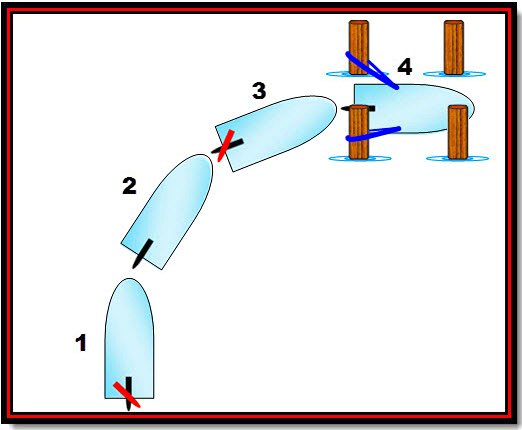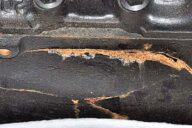Here’s another great sailing tip from our friend Capt. John from skippertips.com…
Just as you enter the marina, your engine coughs and dies. You still have just a bit of momentum. But will it be enough to make the turn into an empty slip just ahead to starboard? Use these three sailing tips to learn how to “feather” your boat in an emergency!
To feather with a tiller, shove the tiller hard away from the direction of turn. This is a super fast thrust; no more than half of a second. Then bring the tiller back to amidships (center) in a smooth motion. Right away, do it again; hard thrust, then ease it back to amidships.
To feather with a wheel, turn the wheel hard in the direction of the turn; then ease it back to amidships. Take care not to turn the wheel all the way to the stops (the maximum ‘throw’ of the rudder where it will turn no further). This could damage the rudder. Keep your hands on the wheel at all times to maintain good control.
Why ease the helm back to the center? Note that after each hard thrust, we ease the tiller or wheel back to the centerline. You want to avoid stalling the boat while she turns. Use a fast, smooth motion to return to the center. Then a super fast thrust away to feather; then a fast smooth motion to return to center.
Continue the sequence described above with the helm (tiller or wheel) until you complete the turn. With practice, you can turn a boat by feathering with the smallest amount of forward momentum.
Now let’s put this into play. You have just lost your engine and need to make a sharp turn into a slip ahead to starboard. You have just enough steerage to make way through the water. Use the steps below along with the illustration.
1. Shove the tiller hard to port or turn the wheel hard to starboard to get the bow to turn (illustration 1). Pull the tiller in a slow, smooth motion back to the centerline or center the wheel (illustration 2).
2. Right away, shove the tiller again hard to port or turn the wheel hard to starboard. Make this part of the sequence the instant after your tiller or wheel gets to the centerline position. Continue this sequence in order to enter the slip (illustrations 3 and 4).
If this were cadence it might go something like this at a normal speaking pace: “1 and 1,2,3,4; 1 and 1,2,3,4; 1 and 1,2,3,4…). The short “1 and” will be the time to push the tiller hard over or to turn the wheel hard over. The longer “1,2,3,4” count will be the smooth return from hard over (tiller or wheel) back to the amidships position (centerline).
Adjust the length of this cadence to your boat’s ability to turn and to the real-time conditions. After some practice, this technique will become second nature. In all cases feathering will be quite fast, without delays. Your objective must be reached before you lose all momentum and wind or current take control.
3. Get over a stern line or after quarter springline as soon as possible. Prep the deck with two long lines with large eyes in one end. Belay the bitter end to a stern cleat. Drop the eye over one of the outermost pilings just as the boat enters the slip. (illustration 4). That way, your bow will be protected from impact with the seawall at the head of the slip.
Why rig lines on both sides? If the crew misses with the first line, they have a second line ‘rigged ‘n ready’. The illustration shows springs on both sides of the boat. If single- or short-handed, it may be easier to rig those two springs on the same side of the boat. Your #1 priority in emergency docking maneuvers will be to stop the forward motion of the boat.
Captain John’s Sailing Tip
Why does feathering work on most sailboats but not on most power boats? Rudder size. Sailboat rudders often have a much larger, deeper surface area than their power boat cousins. Rudders are similar in design and shape to sails or airplane wings and operate on many of the same principals.
~~~~~~~~~~~~~~~~~~~~
Use these easy sailing tips to master the art of handling your boat in tight quarters. Learn to feather your rudder to become the true master and commander of your small sailboat–wherever you sail or cruise!












